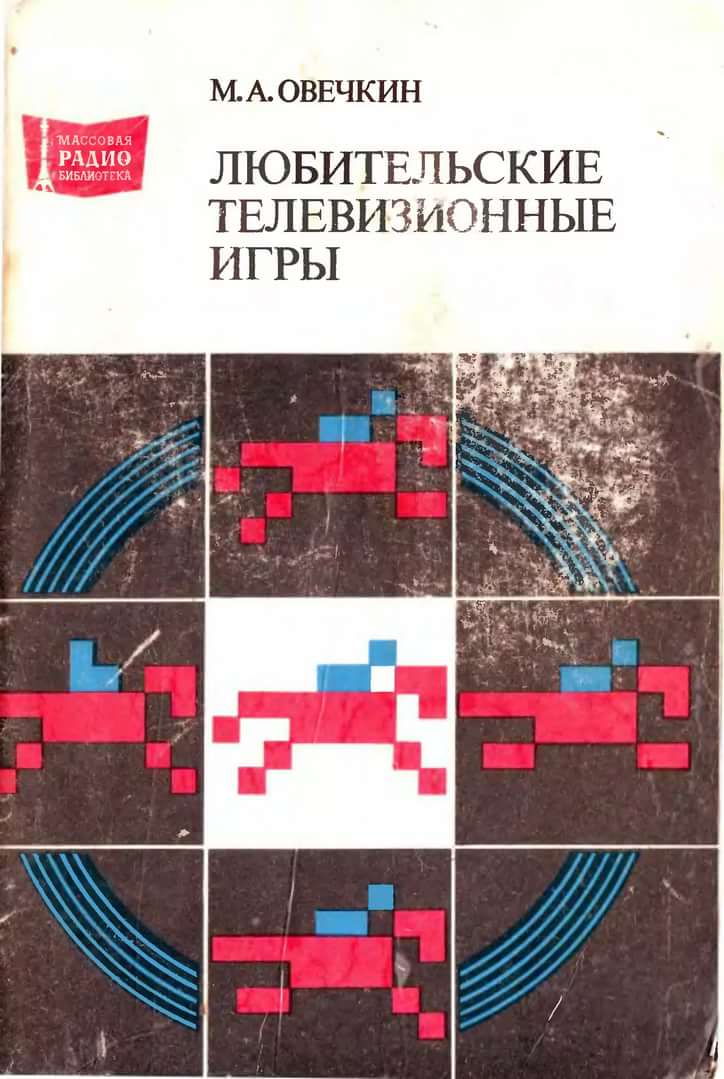
On the screenshot above, video is being grabbed from real hardware during debug process
Alexander Mikhaylovich Kokovin is a Russian video blogger known for repairing various vintage electronics, mostly Soviet reel-to-reel video tape recorders. These are not easy to fix, require complex and precise adjustments possible only with a lot of knowledge and skills, but he mastered this art well enough. He also enjoys tinkering with simpler devices, such as old TV sets, 8- and 16-bit home computers, various audio equipment.
Alexander is often criticized for not building complex things from scratch, only restoring existing ones. And it was true until he found this book…

Its cover says: M.A. Ovechkin, DIY video games. By the way, I also once had the same book, but, even though I was a skilled TTL circuitry user, I decided not to build the units described there, because they were several times harder to assemble than then-popular Soviet homemade computer, Radio-86RK. I already knew that I would abandon it in the middle of building process, if not earlier. But Kokovin is different, he decided to proceed!
The book describes two TTL IC-based game consoles, the second of which is similar to Atari Steeplechase 61 cm (24 inch) CRT arcade machine, as well as its Soviet clone Skachki, both from seventies. The homemade version is simplified compared to arcade one, designed for four players instead of seven. Otherwise, gameplay is similar. Each player controls a horse, making it jump over obstacles. After the best player crosses the finish line, everything on the screen freezes, showing who wins the second, third and fourth prizes.
The console described in the book contains no ROMs, everything is hard-wired, and the horses are displayed using large square pixels fit into raster sprites. Alexander would not be himself without improving that and making a retro console «with a twist». By changing division ratios of binary counters, he made both horizontal and vertical resolution of sprite matrices several times higher, reducing pixel sizes accrodingly by each coordinate as well. The resulting sprites are much more detailed, but now they require parallel ROM chips for storage.
The other improvement is advanced sound subsystem. He built two music players, both also using parallel ROM chips. The first player is for digitized sound samples such as horse steps, etc. The second one plays two-voice beeper music: tone accompanied by bass. Of course, samples are short, while beeper chiptune is long, despite using ROMs of the same size for both devices. This is like comparing WAV and General MIDI files of the same size in bytes: the latter plays much longer.
Here is the completed beeper music player in operation:
Currently much of the console circuit is built and debugged, sprites, tracks and obstacles are generated, but some parts still have to be added to make the thing playable. Watch from 116th minute (or from beginning, if you also like stylish monaural phonographs), but don’t expect to see the game being played yet. After finishing the project, Kokovin plans to build a self-contained, one-piece 32 cm (13 inch) CRT arcade machine (of course, without coin or bill acceptor) using the circuit.
P.S. This is Habr’s second article in English (the first one, by another author, is here). Hope you enjoyed it.
Источник



